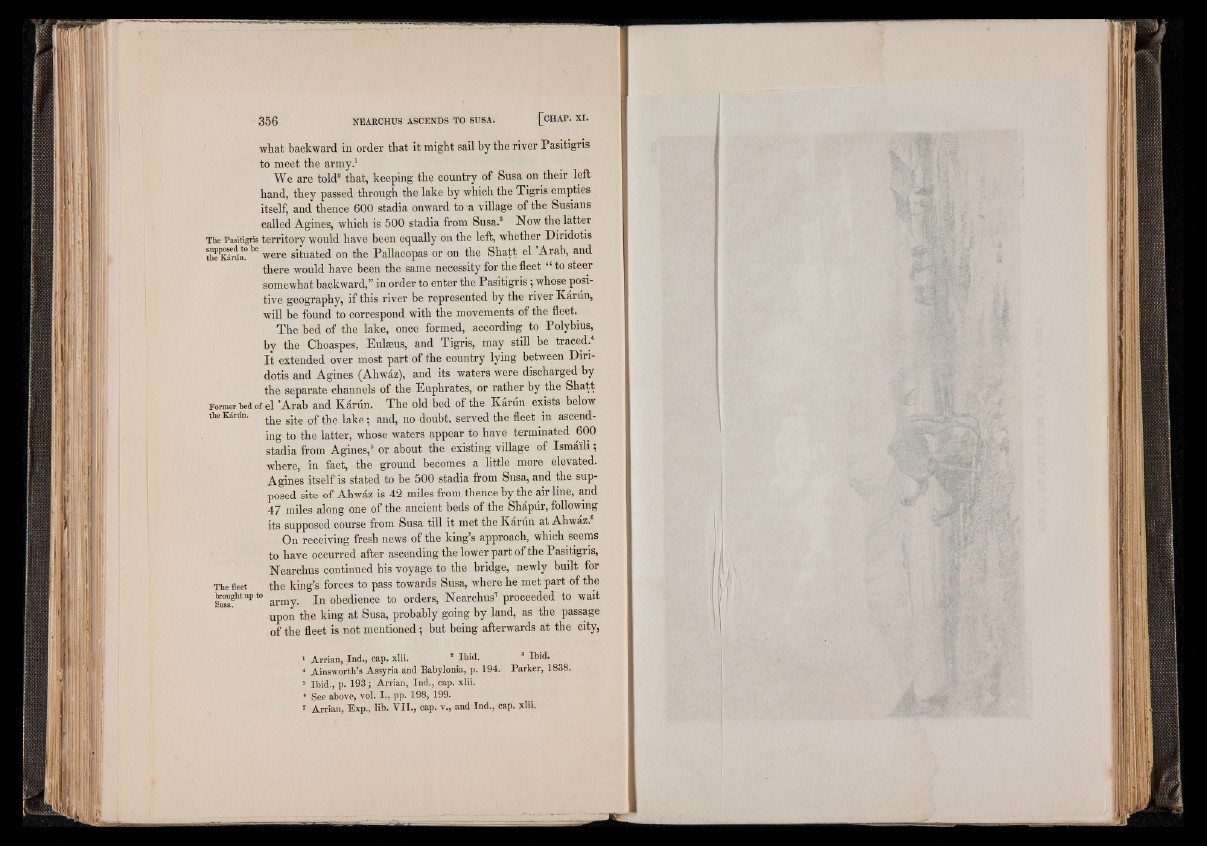
356 NEARCHUS ASCENDS TO SUSA. [CHAP. XI.
what backward in order that it might sail by the river Pasitigris
to meet the army.1
We are told2 that, keeping the country of Susa on their left
hand, they passed through the lake by which the Tigris empties
itself, and thence 600 stadia onward to a village of the Susians
called Agines, which is 500 stadia from Susa.3 Now the latter
The Pasitigris territory would have been equally on the left, whether Diridotis
SeSrtiu!> 1,6 were situated on the Pallacopas or on the Shatt el Arab, and
there would have been the same necessity for the fleet “ to steer
somewhat backward,” in order to enter the Pasitigris; whose positive
geography, if this river be represented by the river Karun,
will be found to correspond with the movements of the fleet.
The bed of the lake, once formed, according to Polybius,
by the Choaspes, Eulseus, and Tigris, may still be traced.
It extended over most part of the country lying between Diridotis
and Agines (Ahwaz), and its waters were discharged by
the separate channels of the Euphrates, or rather by the Shatt
Former bed of el ’Arab and Karun. The old bed of the Karun exists below
the Karun. ^ site 0f the lake; and, no doubt, served the fleet in ascending
to the latter, whose waters appear to have terminated 600
stadia from Agines,5 or about the existing village of Ismaili;
where, in fact, the ground becomes a little more elevated.
Agines itself is stated to be 500 stadia from Susa, and the supposed
site of Ahwaz is 42 miles from thence by the air line, and
47 miles along one of the ancient beds of the Shapur, following
its supposed course from Susa till it met the Karun at Ahwaz.
On receiving fresh news of the king’s approach, which Seems
to have occurred after a s c e n d i n g the lower part of the Pasitigris,
Nearchus continued his voyage to the bridge, newly built for
The fleet the king’s forces to pass towards Susa, where he met part of the
taoughtupto I n o b e d i e n c e to orders, Nearchus7 proceeded to wait
upon the king at Susa, probably going by land, as the passage
of the fleet is not mentioned; but being afterwards at the city,
i Arrian, Ind., cap. xlii. 2 Ibid. 8 Ibid.
4 Ainsworth’s Assyria and Babylonia, p. 194. Parker, 1838.
5 Ibid., p. 193; Arrian, Ind., cap. xlii.
* See above, vol. I ., pp. 198, 199.
7 Arrian, Exp., lib. V II., cap. v., and Ind., cap. xlii.